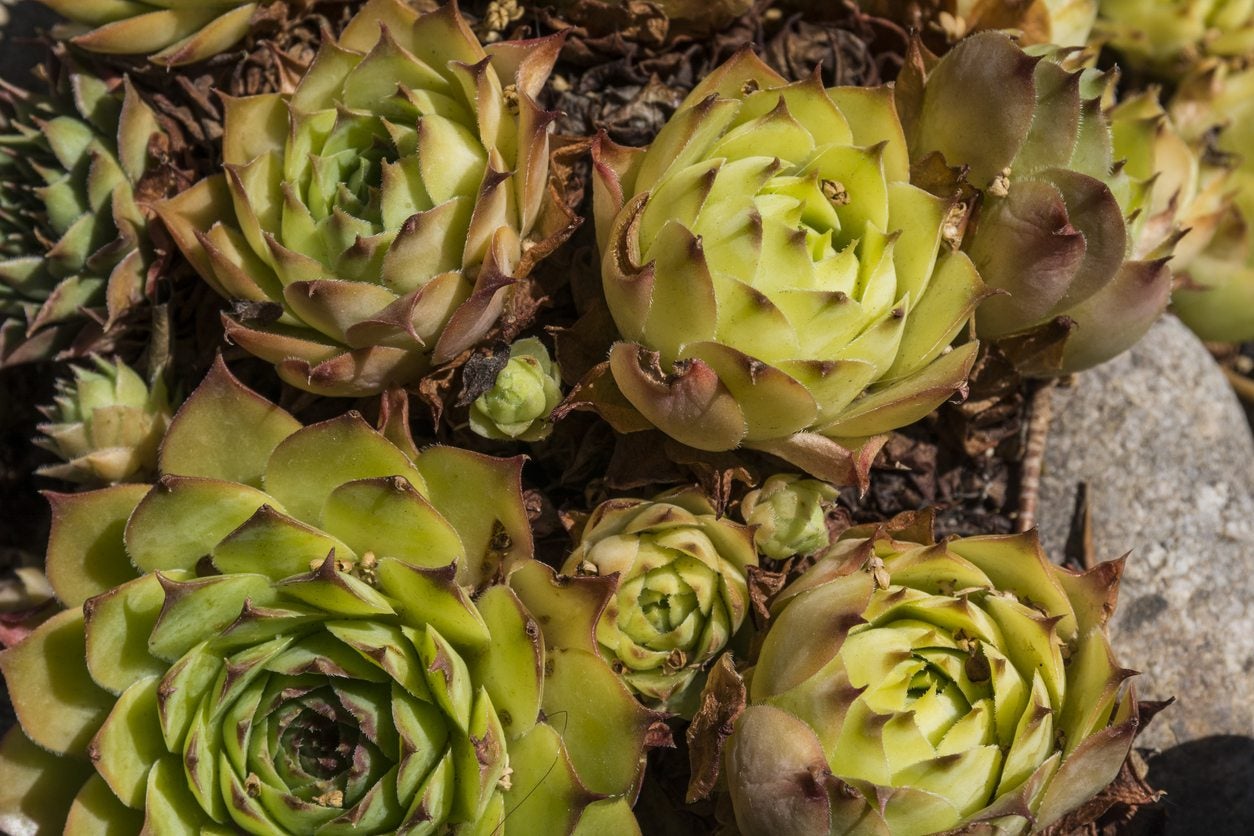Jovibarba Care – Tips On Growing Jovibarba Plants


Sweet, quirky little succulents in the garden add charm and ease of care, whether grown in-ground or in containers. Jovibarba is a member of this group of plants and produces compact rosettes of fleshy leaves. What is Jovibarba? You can think of these tiny plants as another form of hens and chicks, but for all its similarities in appearance, the plant is a separate species. However, it is in the same family, sharing identical site preferences and an almost indistinguishable appearance.
Difference Between Sempervivum and Jovibarba
Some of the easiest and most adaptable plants available are succulents. Many of these are even hardy specimens that can live in the USDA zone 3. Jovibarba hens and chicks are not Sempervivum, a genus that includes hens and chicks and several other succulent species. They have been defined as a separate genus and while they have a similar appearance and share a common name, they reproduce quite differently and produce distinctive flowers. Just like Sempervivum, Jovibarba care is simple, straightforward, and easy. The differences between these two plants go farther than simple scientific and DNA classification. In most sites, growing Jovibarba plants instead of Sempervivum is an interchangeable option. Both need sunny, dry locations and produce singular rosettes with blushed leaves. This is where similarities stop, however. Sempervivum flowers are star-shaped in tones of pink, white, or yellow. Jovibarba hens and chicks develop bell-shaped blooms in yellow hues. Sempervivum produces pups on stolons. Jovibarba can reproduce with pups on stolons or amongst the leaves. The stems, which attach the pups to the mother plant (or hen), are brittle and dry with age. The pups then easily detach from the parent, get blown or moved away, and root in a new site. This gives Jovibarba species the name "rollers" due to the 'pups’ (or hens) ability to roll away from the hen. Most of the species of Jovibarba are alpine species. Jovibarba hirta is one of the largest of the species with several sub-species. It has a large rosette with burgundy and green leaves and produces many pups nestled in the rosette. All Jovibarba plants will take two to three years from maturity before flowering. The parent rosette dies back after bloom but not before numerous pups have been produced.
Growing Jovibarba Plants
Plant these succulents in rockeries, tiered gardens, and well-draining containers. The most important items when learning how to care for Jovibarba and its relatives are good drainage and protection from drying winds. Most species thrive even where snow is common and can withstand temperatures of -10 degrees F. (-23 C.) or more with some shelter. The best soil for Jovibarba is a mixture of compost with vermiculite or sand added for increased drainage. They can even grow in small gravel. These cute little plants thrive in poor soil and are drought-tolerant for short periods of time once established. However, for best growth, supplemental water should be given several times per month in summer. For the most part, they do not need fertilizer but may benefit from a little bone meal in spring. Jovibarba care is minimal, and they actually thrive on benevolent neglect. Once rosettes have flowered and died back, pull them out of the plant group and either install a pup in the place or fill in with soil mixture. The flower stalk is generally still attached to the dead or dying rosette and simply pulling that will remove the rosette.
Sign up for the Gardening Know How newsletter today and receive a free copy of our e-book "How to Grow Delicious Tomatoes".

Bonnie Grant is a professional landscaper with a Certification in Urban Gardening. She has been gardening and writing for 15 years. A former professional chef, she has a passion for edible landscaping.